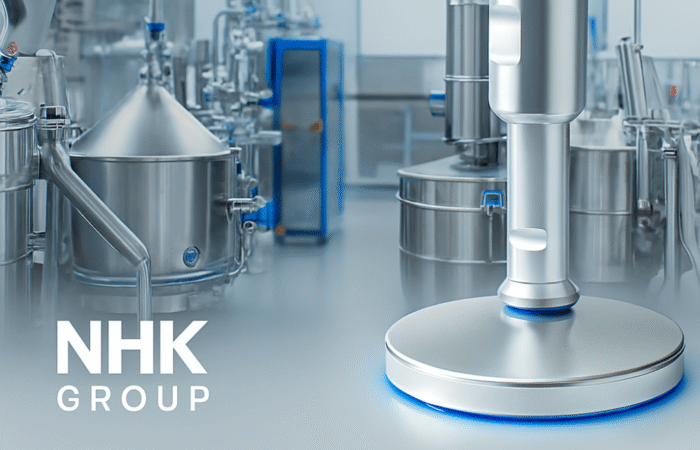
Reduce water and cleaning detergent usage
In the food and beverage industry, maintaining high hygiene standards is crucial to ensure consumer safety and product quality. One of the key challenges faced by manufacturers is the efficient cleaning of equipment while minimizing the use of water and detergents. This is where EHEDG (European Hygienic Engineering and Design Group) and 3-A SSI (3-A Sanitary Standards, Inc.) certified components and parts come into play. These certifications ensure that equipment meets stringent hygiene standards, resulting in more efficient cleaning processes and reduced resource consumption. This article explores how EHEDG and 3-A SSI certifications contribute to sustainability and efficiency in the food processing industry. The European Hygienic Engineering and Design Group (EHEDG) is an organization dedicated to improving hygiene during the processing and packaging of food products. EHEDG certification ensures that equipment is designed and constructed in a way that facilitates easy and effective cleaning, preventing microbial contamination. Components that carry the EHEDG certification are tested for cleanability, material compatibility, and design, ensuring they meet high hygiene standards. 3-A Sanitary Standards, Inc. (3-A SSI) is a non-profit organization in the United States that develops sanitary standards for dairy and food processing equipment. The 3-A SSI certification focuses on equipment design, materials, and fabrication to ensure that surfaces can be easily cleaned and sanitized. Equipment with this certification is designed to minimize the risk of bacterial contamination and adhere to rigorous hygiene requirements. One of the significant advantages of using EHEDG and 3-A SSI certified components is the reduction in water usage during cleaning. These components are designed to have smooth surfaces and eliminate crevices where bacteria can harbor. This design minimizes the need for excessive water to achieve thorough cleaning, leading to substantial water savings over time. Certified components and parts often require less detergent for effective cleaning. The optimized design ensures that residues are easily washed away, reducing the need for harsh chemicals. This not only lowers operational costs but also minimizes the environmental impact of detergent runoff. The design and construction of EHEDG and 3-A SSI certified equipment ensure that cleaning processes are more efficient. The smooth surfaces and hygienic design reduce cleaning time and effort, allowing manufacturers to focus on production rather than extended cleaning cycles. This efficiency translates into increased productivity and lower labor costs. Using certified components helps maintain high levels of hygiene, reducing the risk of product contamination. By preventing microbial growth and ensuring easy cleaning, manufacturers can safeguard consumer health and protect their brand reputation. This focus on safety is particularly critical in the food and beverage industry, where contamination can lead to significant health risks and financial losses. A large dairy processing plant in Europe implemented EHEDG certified components throughout its production line. By optimizing equipment design and cleanability, the plant reduced its water usage by 25% and detergent usage by 30%. This led to significant cost savings and improved environmental sustainability. Additionally, the plant experienced a 20% increase in cleaning efficiency, allowing for more rapid production turnover. A beverage manufacturing facility in the United States adopted 3-A SSI certified equipment to enhance its cleaning processes. The facility reported a 15% reduction in water consumption and a 20% decrease in detergent usage. The certified components also helped the facility achieve a 95% reduction in cleaning-related downtime, boosting overall production efficiency and profitability. The reduction in water and detergent usage through the adoption of EHEDG and 3-A SSI certified components aligns with global sustainability goals. By minimizing resource consumption, manufacturers can significantly reduce their environmental footprint. This commitment to sustainability not only benefits the planet but also enhances the company’s image as a responsible and eco-friendly business. Water is a precious resource, and its conservation is critical in many regions facing scarcity. By using certified components that require less water for cleaning, manufacturers contribute to water conservation efforts. This is particularly important in industries that traditionally consume large volumes of water, such as food and beverage processing. Reducing the use of cleaning detergents has a positive environmental impact by decreasing chemical runoff into water systems. This reduction helps preserve aquatic ecosystems and reduces the chemical load on wastewater treatment facilities. Furthermore, it aligns with regulatory requirements for reducing chemical emissions and promoting eco-friendly practices. As the demand for sustainable and efficient manufacturing practices grows, the role of hygienic design and certified components will become increasingly important. Innovations in materials and design will continue to enhance the cleanability of equipment, further reducing resource consumption. Manufacturers that prioritize hygienic design will be better positioned to meet consumer expectations and regulatory requirements while achieving operational excellence. Advancements in technology, such as the use of smart sensors and automated cleaning systems, will complement the benefits of EHEDG and 3-A SSI certified components. These technologies can optimize cleaning processes, monitor equipment cleanliness in real-time, and further reduce water and detergent usage. Collaboration between industry stakeholders, including manufacturers, certification bodies, and regulatory agencies, will drive the adoption of hygienic design standards. By working together, the industry can develop more comprehensive guidelines and encourage the widespread use of certified components. EHEDG and 3-A SSI certified components and parts play a vital role in reducing water and cleaning detergent usage in the food and beverage industry. By ensuring equipment meets high hygiene standards, manufacturers can achieve greater cleaning efficiency, lower operational costs, and enhanced sustainability. As the industry continues to evolve, the focus on hygienic design will remain a key driver of innovation and success. Embracing certified components not only benefits manufacturers but also contributes to a healthier planet and safer food supply chain. Industrial machinery requires precision-engineered components that meet exacting standards for durability, safety, and performance. This comprehensive guide explores the essential machinery parts that drive modern manufacturing across food processing, packaging, and chemical industries. Understanding the difference between Pillow Block Bearings and Flange Bearing Units is crucial for engineers and procurement professionals seeking to optimize equipment longevity. Pillow block bearings, also known as plummer blocks, are self-aligning bearing units that simplify installation and significantly reduce maintenance costs. These versatile components mount on machine frames and support rotating shafts with exceptional precision, ensuring smooth operation in demanding industrial environments. Flange bearing units offer a more compact alternative, featuring integrated flanges that enable direct mounting to flat surfaces without additional hardware. Both designs come in various materials, including stainless steel grades optimized for corrosive environments and food-grade applications where hygiene is paramount. The importance of material selection cannot be overstated in machinery design. 440 Grade Steel and 420 grades offer distinctly different properties suited to specific applications and environmental conditions. The 440 stainless steel variant provides superior hardness and exceptional edge retention, making it ideal for cutting tools and high-wear applications requiring maximum durability. Meanwhile, 420 stainless steel offers better corrosion resistance and is preferred in food processing equipment where chemical exposure is common. Hygienic stainless steel components have become essential in food machinery, meeting EHEDG standards and facilitating rapid equipment cleaning required in modern food production facilities. Understanding ingress protection ratings is equally critical for machinery durability and operational reliability. IP67 rating ensures protection against dust and temporary water immersion, while IP68 rating provides complete dust protection and sustained water immersion capabilities for submerged operations. The IP69K standard represents the highest protection level, specifically designed for high-pressure wash-down environments found in industrial food processing facilities. These ratings define how effectively machinery components withstand environmental challenges and maintain performance. Modern industrial facilities increasingly demand equipment that combines high performance with ease of maintenance and sanitation. The choice between different bearing types depends on operational requirements, environmental conditions, and budget constraints. Proper component selection ensures extended equipment lifespan, reduced downtime, and improved operational efficiency.EHEDG and 3-A SSI Certified Components and Parts
Understanding EHEDG and 3-A SSI Certifications
EHEDG Certification
3-A SSI Certification
Benefits of Using Certified Components
1. Reduced Water Consumption
2. Lower Detergent Usage
3. Enhanced Cleaning Efficiency
4. Improved Product Safety
Case Studies: Real-World Applications
Dairy Processing Plant
Beverage Manufacturing Facility
Sustainability and Environmental Impact
Water Conservation
Chemical Reduction
The Future of Hygienic Design
Technological Advancements
Industry Collaboration
Reduce water and cleaning detergent usage


Contact
Understanding Machinery Components & Protection Standards













